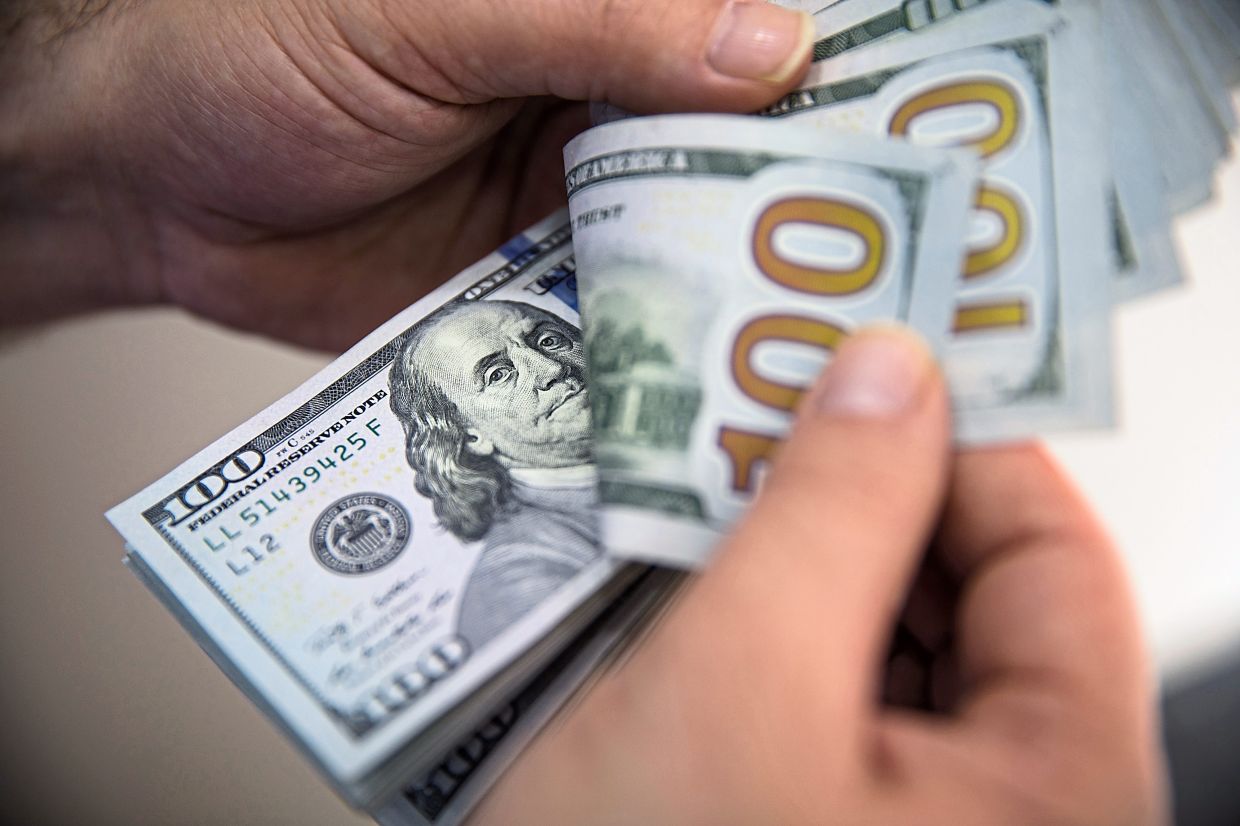THE dollar has risen too far, too fast for many countries. And the
THE dollar has risen too far, too fast for many countries.
And the world’s two largest holders of dollars may soon sell some of their US$4.35 trillion (RM19.55 trillion) stash of foreign currency reserves – finally pushing back against a year of relentless and potentially inflationary dollar gains.
The Federal Reserve’s (Fed) aggressive interest rate hikes have propelled the dollar to its strongest level in decades against many of the world’s major currencies – widening a US interest rate gap with rest of the world, particularly Asia.
China’s yuan has fallen to a two-year low near seven per dollar, and the Japanese yen hit a 24-year low near 145 yen per dollar.
The yen’s fall – 20% this year and 30% since the beginning of last year – is staggering for a Group of Three currency.
Some Asian countries, like India and Indonesia, have dipped their toes into the foreign exchange (forex) market this year, intervening to sell dollars and prop up their currencies.
But if China and Japan refuse to use interest rates to match Fed hawkishness and act directly, they may have to resort to forceful currency market intervention – with possible ripple effects across global markets.
They are major holders of US Treasuries and bills, so US fixed income markets could become more volatile.
Other Asian exchange rates could also swing abruptly if central banks in the region feel forced to follow suit.
The People’s Bank of China (PBoC) and Bank of Japan (BoJ) hold foreign currency reserves worth US$3.055 trillion (RM13.73 trillion) and US$1.29 trillion (RM5.8 trillion), respectively. Combined, that is a third of the world’s entire forex reserves pile of around US$12.5 trillion (RM56.42 trillion).
Neither Japan or China has intervened in the forex market selling or buying dollars outright for years, at least not directly, or officially.
China manages its exchange rate by fixing the yuan on a daily basis within a given, narrow range.
Their return would pack a punch.
Brad Setser, senior fellow at the council on foreign relations, and former Treasury official, says direct intervention is a “distinct possibility” that market are becoming increasingly attentive to.
“Other Asian countries have sold forex reserves this year. But Japan and China would be far more significant,” he said, adding: “Japan and China are big enough for future moves in the yuan and the yen to affect the dollar’s broader value. There could be additional pressure on other Asian currencies as well.”
Asia’s two economic and financial powerhouses are coming from different starting points – Japan’s yen is free-floating, China’s yuan isn’t; China is easing monetary policy more than Japan – but they may reach the same conclusion: they have to prop up their exchange rates.
Political and financial obstacles aside, the most effective support they have is direct intervention in the forex market, basically selling dollars for their domestic currency.
The value of the two countries’ reserves fell by US$80bil (RM360bil) in August. Most of that is likely due to exchange rate valuation effects of the currencies that comprise their reserves holdings, principally the dollar and euro.
Japanese officials, including BoJ governor Haruhiko Kuroda, have cranked up the warnings over the yen’s slide.
The potential for Tokyo’s first yen-buying intervention since 1998 sparked the yen’s sharp rebound and the dollar’s broader pullback last Friday.
Japan’s reserves fell US$31bil (RM139.36bil) in August, the second most on record, and are down US$114bil (RM512.5bil) this year, easily on course for the biggest ever annual decline.
This is almost all valuation effects, before any outright dollar selling.
China’s forex reserves, meanwhile, fell US$49bil (RM220bil) last month, and are down almost US$200bil (RM899bil) this year.
The annual decline will be the largest on record after the near-US$1 trillion (RM4.49 trillion) plunge over the period surrounding the shock mini-devaluation in August 2015 and the huge capital outflows that surrounded it.
Dollar-selling intervention from Beijing or Tokyo might have limited impact, however, unless the local currency purchased is “sterilised”, or put back into the domestic money market.
Without sterilisation, buying local currency effectively pushes up domestic interest rates, which runs counter to current PBoC and BoJ monetary policy.
The weakness of the yen and yuan is grabbing headlines due to the financial muscle China and Japan flex, but the combined forex reserves firepower held by India, Taiwan and Singapore, for example, is US$1.4 trillion (RM6.3 trillion).
With the currencies of India and the Philippines sinking to record lows and Malaysia’s ringgit at a post-1998 low, policymakers across Asia are aware that more fuel is being poured on the inflation fire.
“Given this backdrop, it is unsurprising that Asian central banks would step in to slow the pace of their currency depreciation and reduce volatility,” Bank of America analysts wrote last Tuesday. —Reuters
Jamie McGeever writes for Reuters. The views expressed here are the writer’s own.
www.thestar.com.my
